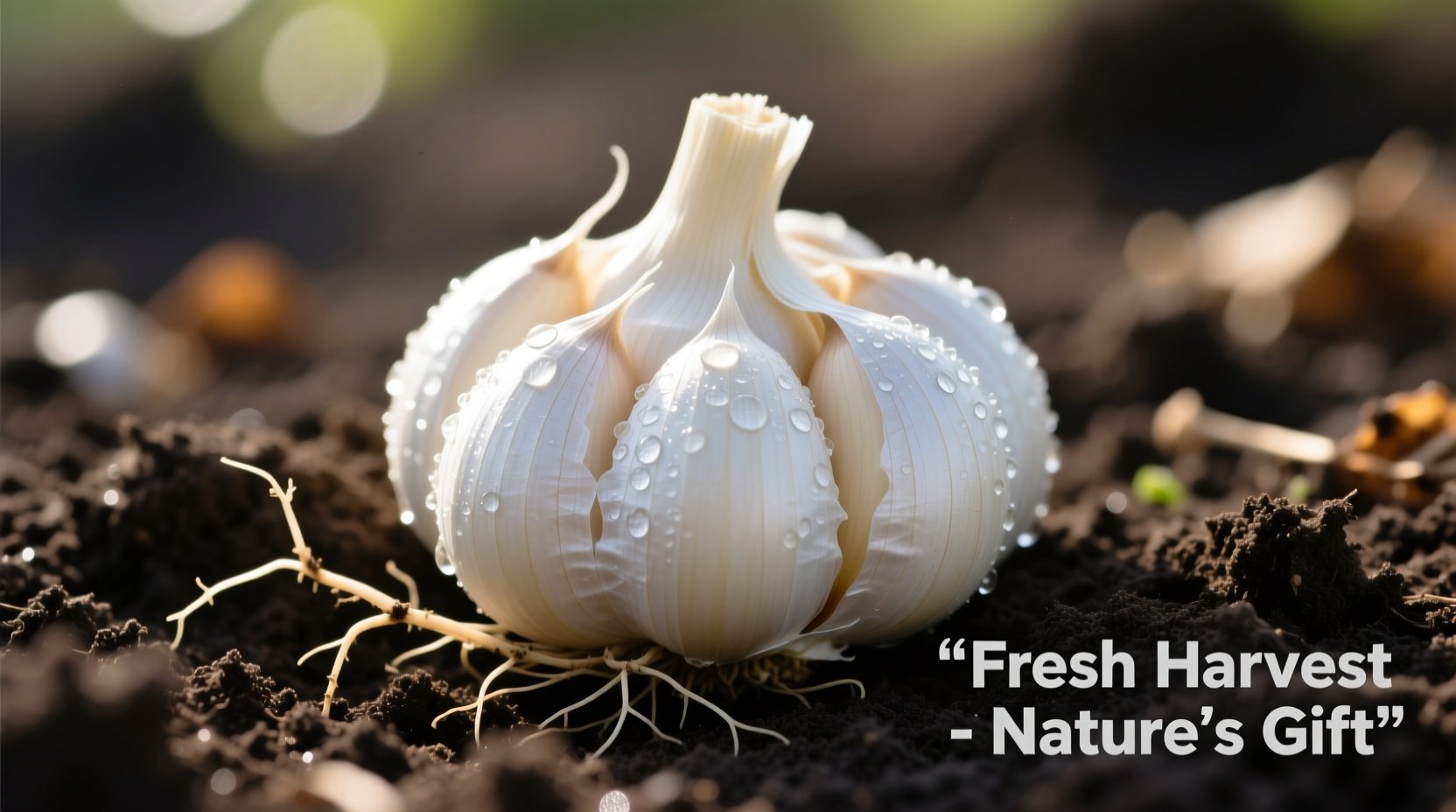Discover why experienced gardeners consistently choose proper seed garlic over grocery store alternatives and how this decision impacts your harvest. Whether you're planning your first garlic patch or optimizing an established crop, understanding seed garlic fundamentals transforms your gardening results.
What Makes Seed Garlic Different From Regular Garlic?
When you see "seed garlic" for sale, it's not a special variety but rather garlic cloves intentionally preserved for planting. The critical distinction lies in how these cloves are handled and selected:

Commercial garlic destined for grocery stores undergoes multiple treatments to extend shelf life, including:
- Sprout inhibitors that prevent natural growth cycles
- Extended storage that depletes energy reserves
- Selection for appearance rather than planting viability
Conversely, dedicated seed garlic receives specialized care throughout its lifecycle to maximize planting potential.
Seed Garlic vs. Grocery Store Garlic: Key Differences
| Characteristic | Seed Garlic | Grocery Store Garlic |
|---|---|---|
| Treatment | Untreated, no sprout inhibitors | Often treated with chlorpropham |
| Storage | Controlled conditions preserving viability | Extended refrigeration depleting energy |
| Selection Criteria | Size, health, varietal purity | Appearance, uniformity |
| Disease Resistance | Rigorously tested, certified disease-free | No disease screening |
| Yield Potential | Produces larger, more uniform bulbs | Often results in weak, undersized plants |
Why Your Garden Needs Proper Seed Garlic
Using appropriate seed garlic isn't just preferable—it's essential for successful cultivation. Research from the Oregon State University Extension Service confirms that grocery store garlic fails to produce viable crops in 68% of home gardening attempts due to treatment chemicals and improper storage conditions.
Professional growers select seed garlic based on specific regional adaptations. For instance, hardneck varieties like 'Music' or 'German Extra Hardy' thrive in colder climates (USDA zones 3-7), while softneck varieties such as 'Inchelium Red' perform better in warmer regions (zones 7-10). This regional specialization explains why seed garlic suppliers often organize their offerings by planting zones.
Choosing the Right Seed Garlic for Your Climate
Selecting appropriate seed garlic requires understanding your local growing conditions. The following context boundaries determine optimal choices:
- Cold climate gardeners (zones 3-5): Hardneck varieties produce superior flavor and larger cloves but require 4-8 weeks of temperatures below 40°F (4°C) to initiate bulb formation
- Moderate climate gardeners (zones 6-7): Both hardneck and softneck varieties work well, with hardnecks offering more complex flavors
- Warm climate gardeners (zones 8-10): Softneck varieties like 'California Early' or 'Silverskin' perform best with minimal chilling requirements
According to the USDA Agricultural Research Service, mismatched garlic varieties account for 42% of planting failures in home gardens. Proper selection based on your specific climate zone dramatically increases success rates.
Planting Seed Garlic: Timing and Technique
Successful garlic cultivation hinges on precise timing and proper planting technique:
- Optimal planting window: Plant 4-6 weeks before your region's first hard frost (typically September to November in northern climates, October to December in southern regions)
- Soil preparation: Amend with 3-4 inches of compost and ensure pH between 6.0-7.5
- Planting depth: Place cloves 2-3 inches deep with pointed end up, spacing 6-8 inches apart
- Mulching: Apply 4-6 inches of straw or leaves after soil cools to 50°F (10°C)
A common mistake among beginners involves planting cloves too shallow, which leads to winter kill in cold climates or premature sprouting in warmer zones. The University of Minnesota Extension recommends deeper planting (3-4 inches) in regions with less than 12 inches of consistent snow cover.
Maximizing Your Seed Garlic Investment
To ensure your seed garlic produces optimal results:
- Store seed garlic at 50-65°F (10-18°C) with 60-70% humidity until planting
- Never separate cloves more than 24-48 hours before planting
- Choose the largest, healthiest cloves from each bulb for planting
- Rotate planting locations every 3-4 years to prevent soil-borne diseases
Professional growers often save their largest bulbs from each harvest specifically for seed stock, creating a continuous improvement cycle in their garlic crops. This practice, documented by the Royal Horticultural Society, can increase bulb size by 15-20% over three growing seasons when combined with proper soil management.
Troubleshooting Common Seed Garlic Issues
Even with proper seed selection, gardeners encounter challenges:
- Failure to sprout: Typically indicates cloves were either treated with sprout inhibitors or planted too deep in heavy soil
- Weak, spindly growth: Usually results from insufficient chilling period or poor soil nutrition
- Small bulb size: Often caused by late planting, overcrowding, or inadequate nutrients during bulbing phase (April-May)
Remember that seed garlic represents a living investment in your garden's future. Each successful harvest provides not only culinary rewards but also the opportunity to select and save your own seed stock for continuous improvement.











 浙公网安备
33010002000092号
浙公网安备
33010002000092号 浙B2-20120091-4
浙B2-20120091-4